For the 2025 school year, there are 3 public elementary schools serving 1,189 students in Sweetwater School District. This district's average elementary testing ranking is 5/10, which is in the bottom 50% of public elementary schools in Tennessee.
Public Elementary Schools in Sweetwater School District have an average math proficiency score of 32% (versus the Tennessee public elementary school average of 35%), and reading proficiency score of 33% (versus the 36% statewide average).
Minority enrollment is 22% of the student body (majority Hispanic), which is less than the Tennessee public elementary school average of 43% (majority Black).
Overview
This School District
This State (TN)
# Schools
4 Schools
1,500 Schools
# Students
1,500 Students
719,413 Students
# Teachers
93 Teachers
48,388 Teachers
Student : Teacher Ratio
16:1
16:1
District Rank
Sweetwater School District, which is ranked within the bottom 50% of all 147 school districts in Tennessee (based off of combined math and reading proficiency testing data) for the 2021-2022 school year.
Overall District Rank
#103 out of 147 school districts
(Bottom 50%)
(Bottom 50%)
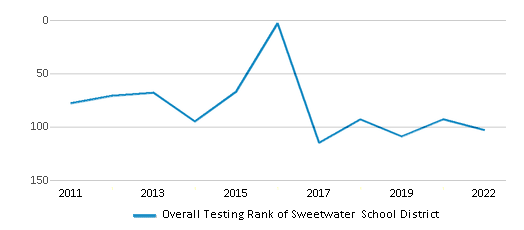
Math Test Scores (% Proficient)
26%
31%
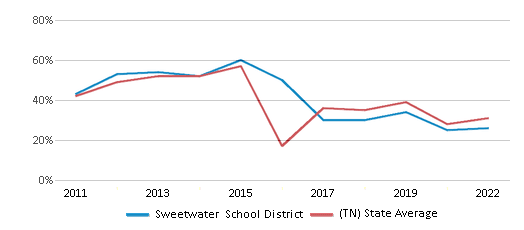
Reading/Language Arts Test Scores (% Proficient)
29%
37%

Science Test Scores (% Proficient)
34%
40%
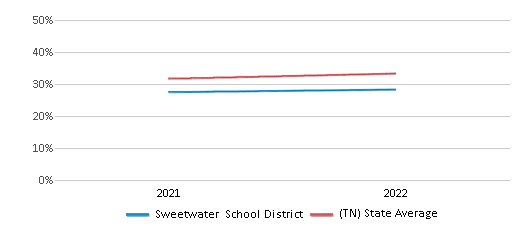
Students by Ethnicity:
Diversity Score
0.37
0.61
# American Indian Students
3 Students
1,225 Students
% American Indian Students
n/a
n/a
# Asian Students
7 Students
15,029 Students
% Asian Students
n/a
2%
# Hispanic Students
222 Students
106,507 Students
% Hispanic Students
15%
15%
# Black Students
30 Students
149,772 Students
% Black Students
2%
21%
# White Students
1,167 Students
410,765 Students
% White Students
78%
57%
# Hawaiian Students
2 Students
856 Students
% Hawaiian Students
n/a
n/a
# Two or more races Students
69 Students
35,256 Students
% of Two or more races Students
5%
5%
Students by Grade:
# Students in PK Grade:
73
29,574
# Students in K Grade:
159
74,511
# Students in 1st Grade:
174
76,014
# Students in 2nd Grade:
173
77,971
# Students in 3rd Grade:
151
74,743
# Students in 4th Grade:
136
75,052
# Students in 5th Grade:
170
75,941
# Students in 6th Grade:
153
75,064
# Students in 7th Grade:
167
70,062
# Students in 8th Grade:
144
69,763
# Students in 9th Grade:
-
5,469
# Students in 10th Grade:
-
5,392
# Students in 11th Grade:
-
4,910
# Students in 12th Grade:
-
4,947
# Ungraded Students:
-
-
District Revenue and Spending
The revenue/student of $10,307 in this school district is less than the state median of $11,979. The school district revenue/student has stayed relatively flat over four school years.
The school district's spending/student of $9,093 is less than the state median of $11,478. The school district spending/student has stayed relatively flat over four school years.
Total Revenue
$16 MM
$12,104 MM
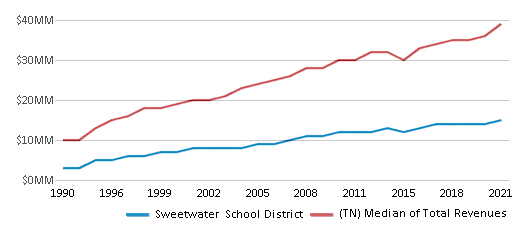
Spending
$14 MM
$11,597 MM
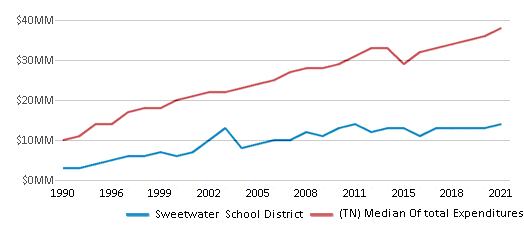
Revenue / Student
$10,307
$11,979
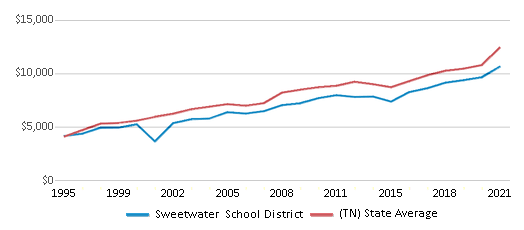
Spending / Student
$9,093
$11,478
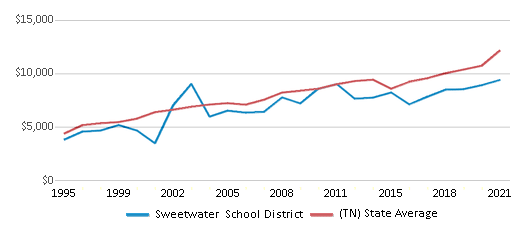
Best Sweetwater School District Public Elementary Schools (2025)
School
(Math and Reading Proficiency)
(Math and Reading Proficiency)
Location
Grades
Students
Rank: #11.
Sweetwater Elementary School
(Math: 38% | Reading: 38%)
Rank:
Rank:
7/
Top 50%10
301 Broad St
Sweetwater, TN 37874
(423) 337-7062
Sweetwater, TN 37874
(423) 337-7062
Grades: 3-4
| 287 students
Rank: #22.
Brown Intermediate School
(Math: 26% | Reading: 29%)
Rank:
Rank:
4/
Bottom 50%10
135 Starrett St
Sweetwater, TN 37874
(423) 337-5905
Sweetwater, TN 37874
(423) 337-5905
Grades: 5-6
| 323 students
Rank: n/an/a
500 Highway 322 East
Sweetwater, TN 37874
(423) 351-7004
Sweetwater, TN 37874
(423) 351-7004
Grades: PK-2
| 579 students
Recent Articles

Year-Round Or Traditional Schedule?
Which is more appropriate for your child? A year-round attendance schedule or traditional schedule? We look at the pros and cons.

Why You Should Encourage Your Child to Join a Sports Team
Participating in team sports has a great many benefits for children, there is no doubt. In this article you will learn what those benefits are.

White Students are Now the Minority in U.S. Public Schools
Increasing birth rates among immigrant families from Asia and Central and South America, combined with lower birth rates among white families, means that for the first time in history, public school students in the United States are majority-minority. This shift in demographics poses difficulties for schools as they work to accommodate children of varying language abilities and socio-economic backgrounds.





